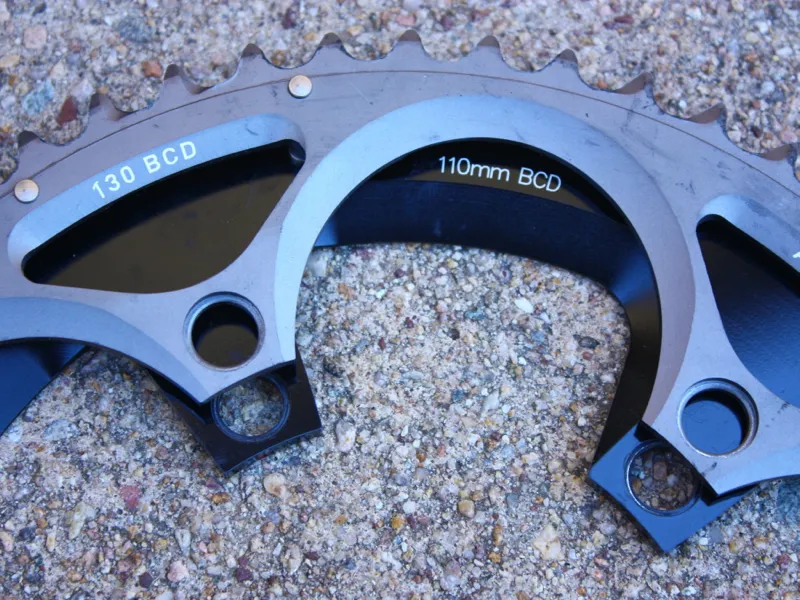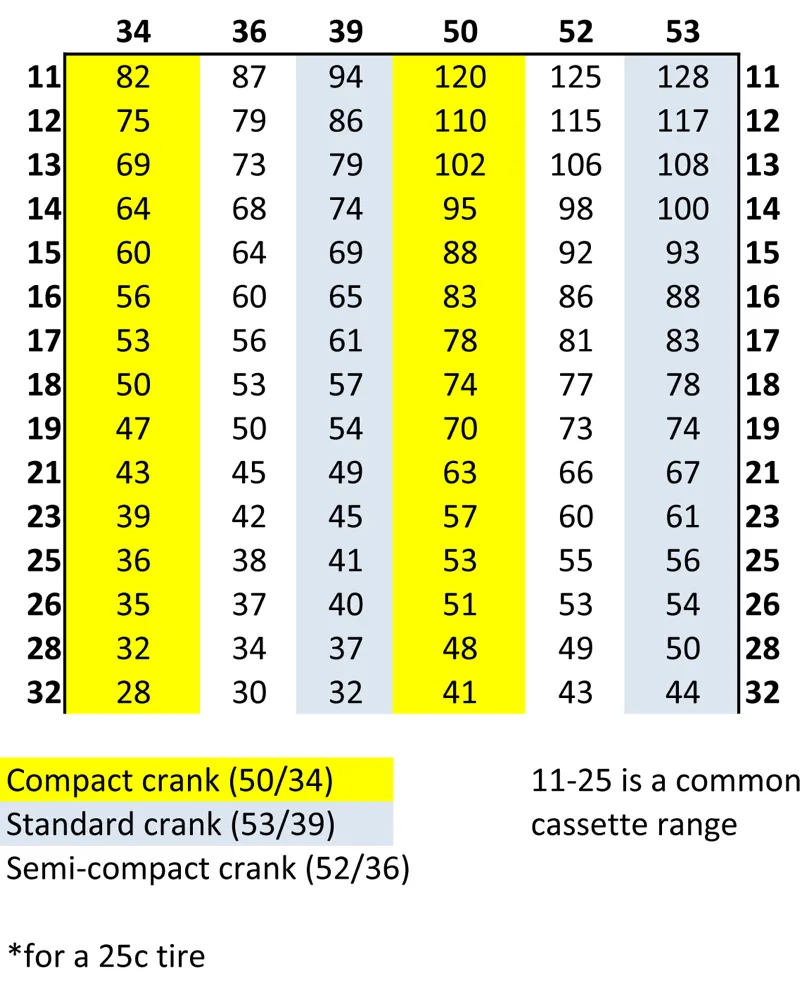A compact crank refers to a road bike crankset with relatively smaller chainrings that can make pedaling easier. While ‘standard’ cranks come with a 53-tooth large chainring and a 39-tooth small ring, compact cranks usually feature 50- and 34-tooth rings.
These smaller, or lower, gears make climbing hills easier, allowing you to spin more over the same distance than with a standard set-up.
Why compact?
As their name implies, compact cranks are a smaller option than standard cranks. This does not refer to the length of the crank arms that connect to the pedals, but instead to the five ‘spider’ arms that connect to the chainrings. Smaller spiders allow for smaller chainrings.
Compact cranks are a lighter alternative to a ‘triple crank’, a crankset with three chainrings that has a wide range of gearing. Although less common now, triples were put onto bikes to give riders lower gears for climbing. Compact cranks, however, are much lighter than triples and still offer easier gearing options than a standard crank.
Bicycle gears work on leverage ratios, pairing a chainring at the front with a cog in the cassette at the back. The wider the ratio, the more speed you can achieve at a given pedaling cadence. A smaller ratio means less leverage on the rear wheel and thus easier pedaling.
Related: Gear down to go faster

Compact cranks often have a 50-tooth big ring and a 34-tooth small ring. Compare this to the standard 53/39
Can I put compact chainrings on my standard crank?
No. Crank arms have specific bolt circle diameters, or BCD, which must be matched up with the corresponding chainring BCD. Standard cranks usually have a 130mm BCD, and typically you can't install anything smaller than a 38T inner ring. Compact cranks, on the other hand, have a 110mm BCD, which can fit inner chainrings as small as 33T.
You can, however, put slightly larger chainrings on a compact crank. A 52/36T combination is particularly popular among many BikeRadar staff, offering a happy medium between top-end speed and climbing ease.

130mm BCD is a standard crank; 110 BCD is a compact
Keep in mind, too, that modern chainrings are usually designed as matched pairs so while you might be tempted to concoct non-standard chainring combinations (such as a 33/53T, for example), be prepared for sloppy shifting as a result.
How different do standard and compact gears feel?
There is a fair amount of overlap between the gearing on standard and compact cranks. Take a look at the gear-inch chart below, which shows the gear size of matching a given chainring with a particular rear cog. And of course the gears on your rear cog play into the ratios. Cassettes — the gears on the back wheel — come in a wide range of options, from around 11-21T up to 12-32T. An 11-25T is a fairly common cassette.
In general, a compact crank means the uphills will feel easier, but you will lack the ultimate top end. That said, most riders will seldom use the ultimate top end on a standard crank (a 53T chainring with an 11T cog) unless pedaling at speed downhill. Pay attention to what gears you use when riding — and whether you feel like you’re lacking more on the top or low end — to determine whether compact or standard is right for you.

